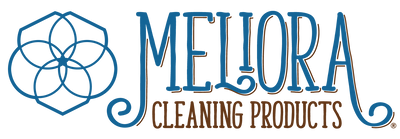Meliora Cleaning Products creates many soap-based products to aid in cleaning your home and body. While the term “soap” has evolved overtime to include detergent based cleansers, a true soap is created with sodium hydroxide or potassium hydroxide – also known as lye.
How does that work?
We mix a special formulation of oils with lye – which then go through a transformation to become soap.
Isn’t lye soap harsh on the skin?
Once a properly formulated soap has finished this transformation, there is no lye remaining in the final product. It effectively becomes a type of sodium salt or potassium salt. Therefore, when made correctly, a lye soap is not lye soap after all, but rather just soap.
What is the difference between Meliora Cleaning Products soap and homemade soap?
We have specialized equipment that allows us to be more precise when we make our soap. This allows for accurate formulations and measurements, unlike most homemade soap. Additionally, our on-site environmental engineer and founder, Kate Jakubas has worked diligently to ensure that each formula has been created to hold the proper amounts of oil for each product. You won’t find too many remaining oils in our home or laundry cleaning products, and you will find just the right amount of left-over oils in our Bath & Body Soap Bars meant to clean your body.
Soapy Science Corner
Just how does soap work to reduce germs and bacteria in your living spaces, in your laundry, and on your body?
Soap molecules have a hydrophilic head, which readily bonds with water. They also have a hydrophobic tail which shuns water and attaches to oils and fats.
When you wash an item with soap, you are surrounding microorganisms with these soapy molecules. While the hydrophilic head bonds with water, the hydrophobic tails are trying to avoid that water and force themselves into the membrane of microbes and viruses, forcing them apart.

Essentially, by washing with soap-based products, you are breaking down and dislodging these microbes and then washing them down the drain. Or, in the case of our All-Purpose Home Cleaner, you are soaking those destroyed microbes up in a cloth.
Is this the same as disinfecting? Not exactly. Our products clean – removing germs, dirt, and impurities from surfaces. While disinfecting refers to the use of chemicals that kill germs on surfaces. You can read more about that in our post on Cleaners vs. Disinfectants (and why both matter during a pandemic)
Want a more thorough description of soapy science? We like the explanation in this New York Times article, Why Soap Works by Ferris Jabr.

